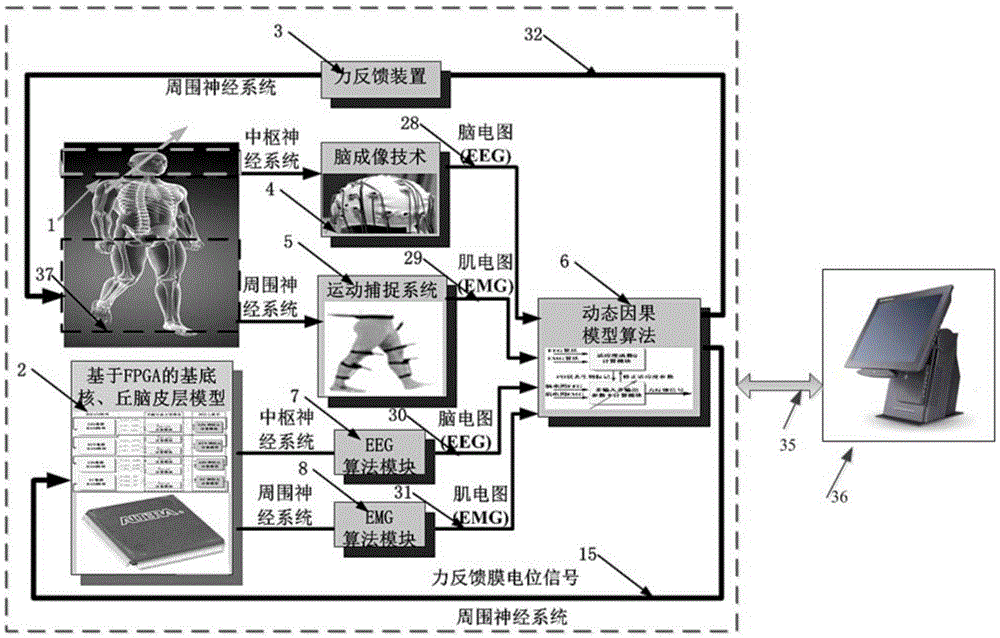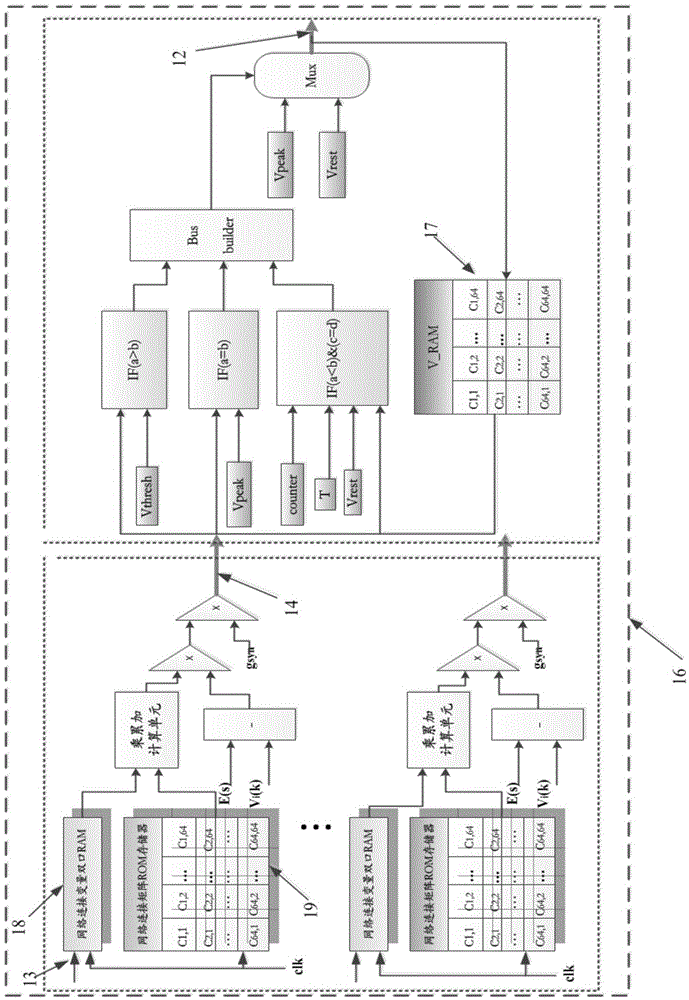Dyskinesia non-intrusive rehabilitative closed-loop brain-computer integrated system based on FPGA
A non-invasive, movement disorder technology, applied in the field of biomedical engineering, can solve the problems of worsening lower limb proprioception, reducing surgical risks, high treatment costs, etc., to achieve the effect of personalized treatment and risk reduction
- Summary
- Abstract
- Description
- Claims
- Application Information
AI Technical Summary
Problems solved by technology
Method used
Image
Examples
Embodiment Construction
[0014] The structure of the closed-loop brain-machine-body system of the FPGA-based non-invasive rehabilitation of movement disorders of the present invention will be described in conjunction with the accompanying drawings.
[0015] The design idea of the closed-loop brain-machine-body system of non-invasive rehabilitation based on FPGA of the present invention is: the closed-loop brain-machine-body system of non-invasive rehabilitation of dyskinesia based on FPGA, the self-adaptive algorithm of the causal dynamic model, Firstly, the subcutaneous nuclei (BG nuclei) associated with motor disordered neurological diseases are mathematically modeled to simulate the onset state of motor disordered neurological diseases. A rehabilitation system for closed-loop brain-machine-body interface therapy, wherein: the system includes the basal ganglia with FPGA as the control core, the thalamocortical model, force feedback device, brain imaging device, motion capture system, EEG algorithm ...
PUM
 Login to View More
Login to View More Abstract
Description
Claims
Application Information
 Login to View More
Login to View More - R&D
- Intellectual Property
- Life Sciences
- Materials
- Tech Scout
- Unparalleled Data Quality
- Higher Quality Content
- 60% Fewer Hallucinations
Browse by: Latest US Patents, China's latest patents, Technical Efficacy Thesaurus, Application Domain, Technology Topic, Popular Technical Reports.
© 2025 PatSnap. All rights reserved.Legal|Privacy policy|Modern Slavery Act Transparency Statement|Sitemap|About US| Contact US: help@patsnap.com



